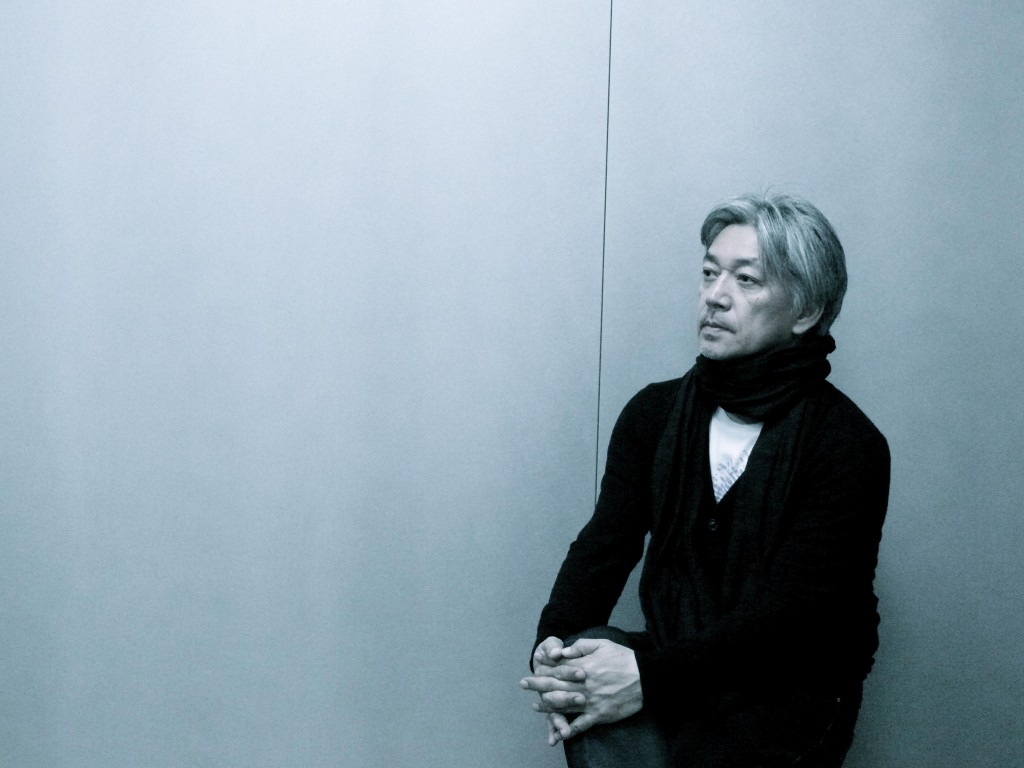EAST MEETS NORTHWEST : Ryuichi Sakamoto Live in Seattle
Ryuichi Sakamoto is an enigma in my mind. Perhaps just as well known for his work with Japanese synth-pop group, Yellow Magic Orchestra, Sakamoto had established himself as one of the most important solo composers in modern Japanese music. Credited with hundreds of releases, spanning from 1978 to the present, he has bestowed upon his audience a plethora of classical piano, experimental/noise, future jazz, and synth-pop, as well as film soundtracks and scores. Since his initial success with YMO, Sakamoto has helped to garner increased attention towards Japanese music through his east-meets-west musicianship.
Now while I am no buff, let alone a “music reviewer”, I am a fan with a curious ear for all things experimental. It is through my tendencies that I was led to discover Sakamoto’s collaborative work with two renowned electronic musicians, Alva Noto and Fennesz. Alva Noto, an alias of German composer, Carsten Nicolai, has worked with Mr. Sakamoto in several projects that lean towards the territories of avant garde and chamber music, all shined with a poignant, digital gleam. It is this work that I feel most drawn to, with Sakamoto’s sparse, thoughtful style and improvisation. While similar in adaptation, Austria’s Christian Fennesz takes the opportunity to bend his magic guitar underneath Sakamoto’s keys in a nearly unrecognizable timbre. However, their roles are also reversible. Fennesz is a guitarist first, giving his neat strums and plucks to the wholly adept mind of Mr. Sakamoto, while the listener is rewarded with pieces that shimmer, undulate and fade from track to track for a sublime listen.
These were my experiences with the work of this great, visionary musician. It is abbreviated, at best, and it would do anyone good to further explore such a back catalogue, but, even without attempting such an undertaking, my curiosity and eagerness to hear this man in person were piqued. Whether it’s pop or noise, it’s clear that Sakamoto’s talent runs deep and that he can apply himself with whatever style he’s drawn to in a moment.

RYUICHI SAKAMOTO
The Moore Theatre
Seattle, Wa
Oct. 30, 2010
Two Yamahas, one player, midi-loops, pre-recorded and live ghost piano playing were flanked by speakers and backed by a large projection screen with which Ryuichi Sakamoto shared his works with a near-capacity audience on a wet and windy Saturday night in Seattle.
Quiet horizons, not empty but barely dense, where small details prick and swell, diminish and diffuse the larger landscape. Width. Depth. Some whimsy. Some energy. The concert given by the master pianist at the Moore Theater on the 30th of October felt tranquil. Sakamoto drew on material from different collaborations and parts of his cannon, most notably opening with a section from UTP, the collaborative effort created with Nicolai and The Ensemble Modern, setting the mood for a rather eerie public affair. After demonstrating the acoustical boundaries of the piano, Mr. Sakamoto came forth with several numbers from his most recent releases and was received with sighs of familiarity, followed by the evening’s first applause.
Throughout the duration of his performance (and three encores), the pieces became more varied. From a delicate meandering on the keyboard to a calculated, Reich-inspired parade of looping and phase, Sakamoto displayed his wide breadth of influence and genius behind the keys. Having freedom within a well-structured program, the audience could see their player performing with such flair that his expertise was truly irrefutable. Both sensitive and subtle, the visual and auditory environment wove an evocative presence, with Sakamoto clearly dedicated and precise in his treatment of both detail and the whole. Vacillating between cerebral and poetic, my attention felt drawn inward and I enjoyed the interplay between macro and micro perspectives.
Obviously appreciative applause in between pieces punctuated the shared world, irritating only in that not enough of the audience had a passion for silence; a vital palette cleanser and margin for the previous energy to settle. Not to mention providing needed space for the resonance of two pianos reverberating in the hall. The experience made for a touching evening. Not so much “moving”, but Sakamoto’s music-shaped warmth grazed the edges of my imagination beautifully.
– G.Skidmore & A. Baybutt
